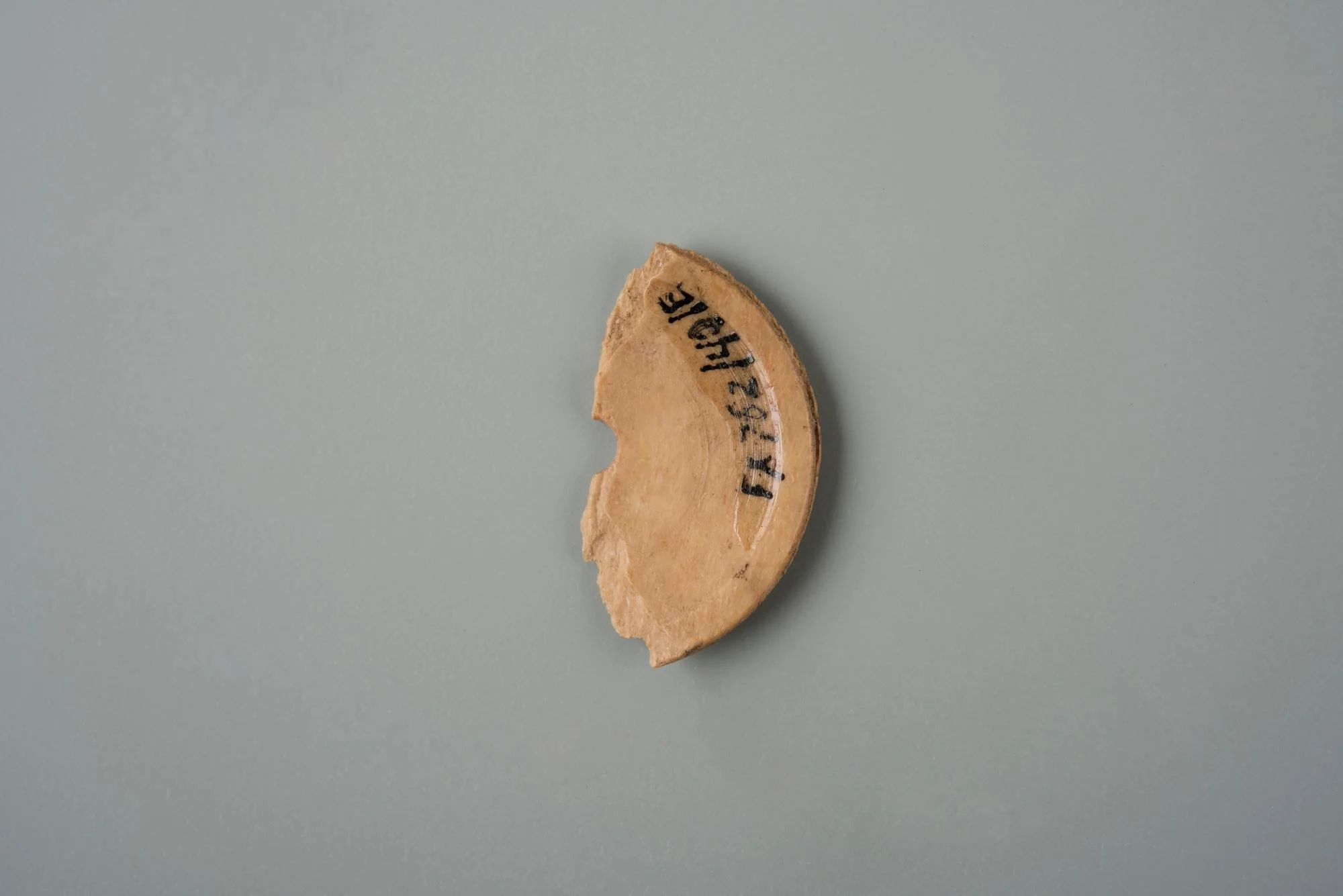Notes
Bone button molds were disks cut from animal bone, often identifiable by the presence of a single central hole created by a cutting tool during production. The bone disk often served as core to either a cloth covered or a two part metal button. In cloth covered buttons, the bone mold served as a backing onto which textile could be stretched. Often, extra fabric was gathered at the back of the button to serve as an attachment point between button and clothing. In a two part metal button, the bone disk served as the button back, to which a thin stamped metal face, usually a copper alloy, would be crimped along a beveled edge of the bone back. Often in these cases, a small length of copper wire would be bent through the central hole of the bone disk to serve as a shank. Despite missing the metal facing and the lack of copper alloy staining, the beveled edge of this bone disk suggests it is of the two part stamped metal variety.
In the eighteenth century, buttons came in a variety of shapes and sizes. Sometimes this variation can be used to identify which articles of clothing a button may have been used in the past. The diameter of this button suggests it was possibly for use on a coat or a waistcoat.
Object Type
Has it Been Conserved?
No
Where Was It Found?
Project Site: House for Families [more details]
Material
Manufacturing Technology
Form
Shape
Completeness
Date
18th century
Country of Origin
Dimensions
10.9mm x 1.05mm x 19.43mm (W x H x L)
Illustration shows object in comparison to the size of a quarter
Weight
0.3 gram(s)
Object Number
1789049
DAACS Number
1789049
Project: House for Families
The structure identified as the “House for Families” on the 1787 Vaughan plan likely housed the majority of the enslaved population living at the Mansion House Farm for much of the second half of the eighteenth century. The building was in existence from circa 1760 until it was demolished in late 1792 or early 1793. The archaeological evidence for the structure consisted of a brick-lined storage cellar (44FX762/40-47) measuring roughly six feet by six feet. Historically the cellar served as a handy trash receptacle once it ceased to be used for its original storage function, and through extensive excavation has yielded an extremely rich assemblage of household refuse. The analysis of these remains offers the opportunity to study important aspects of the daily lives of Mount Vernon's enslaved community.
See All Objects From this Dig


 Buttons
Buttons